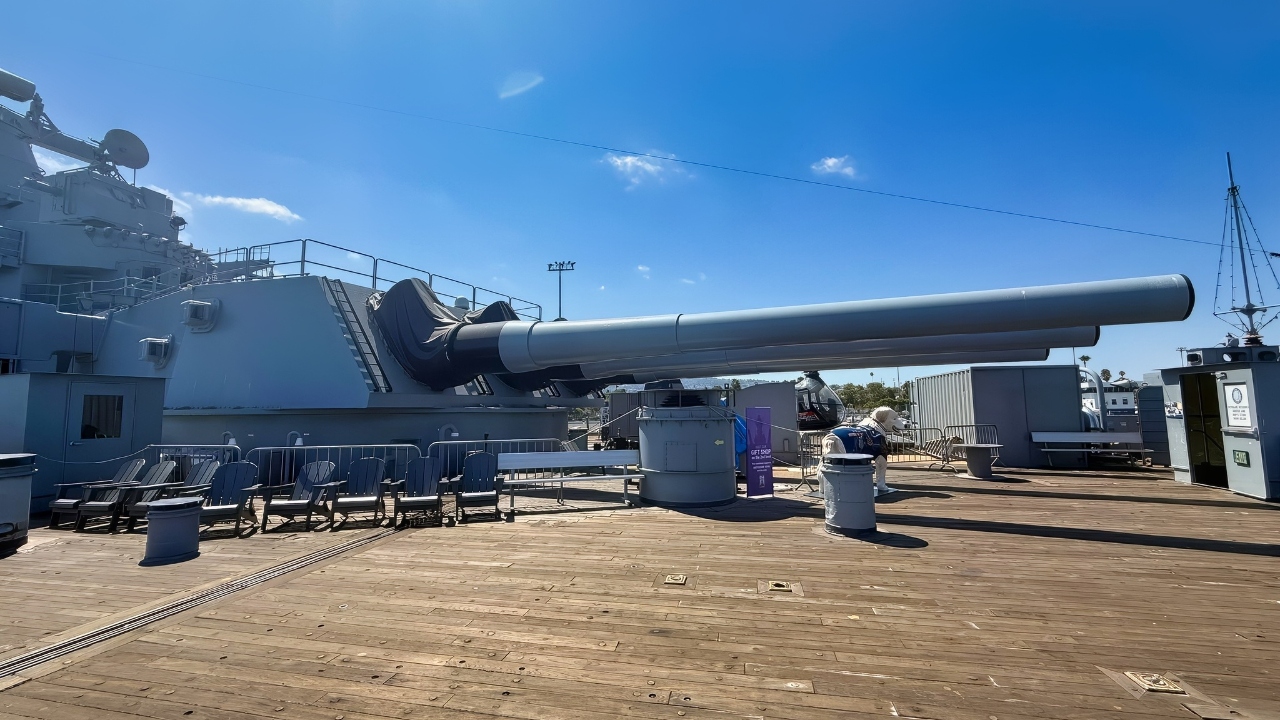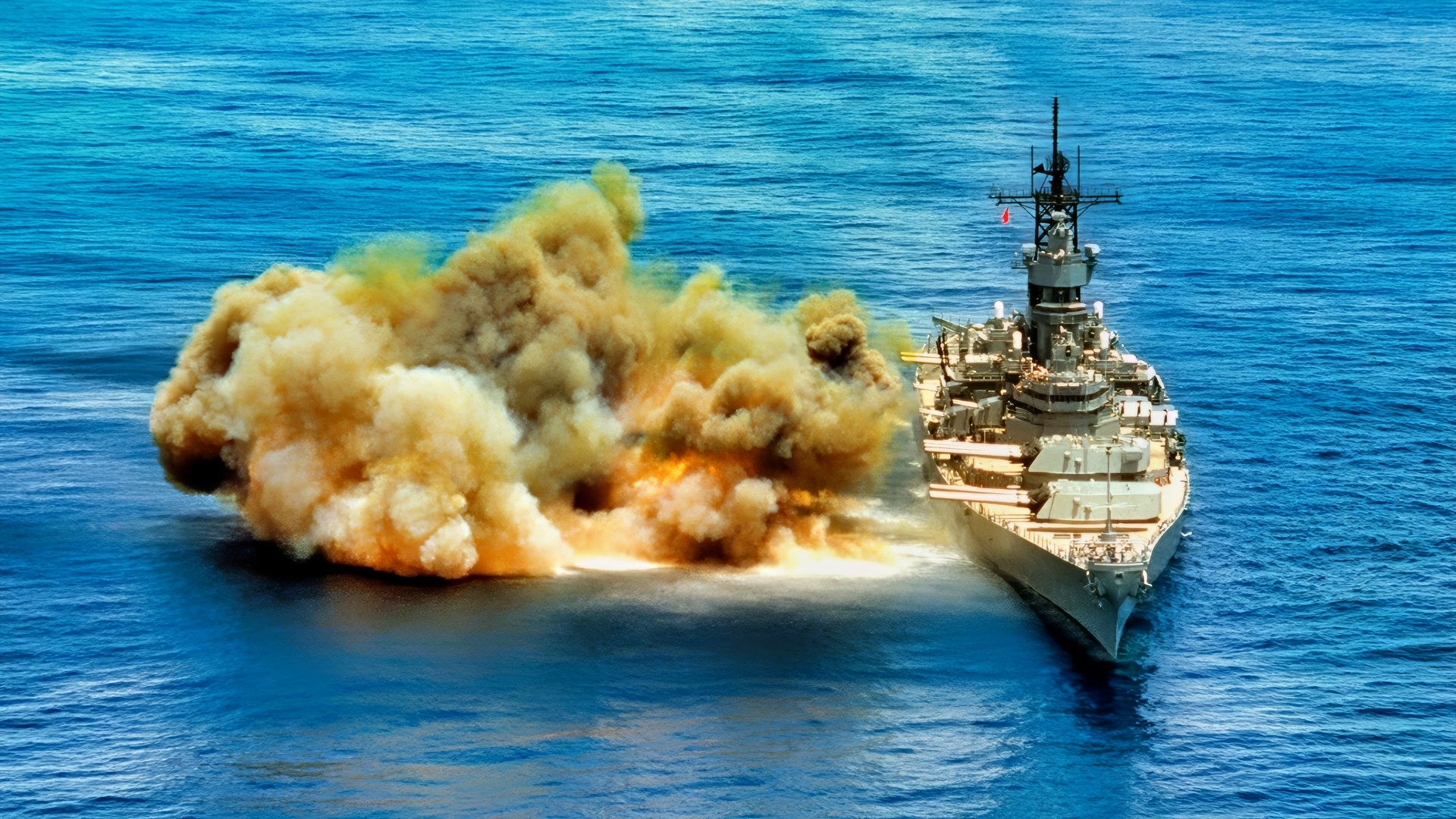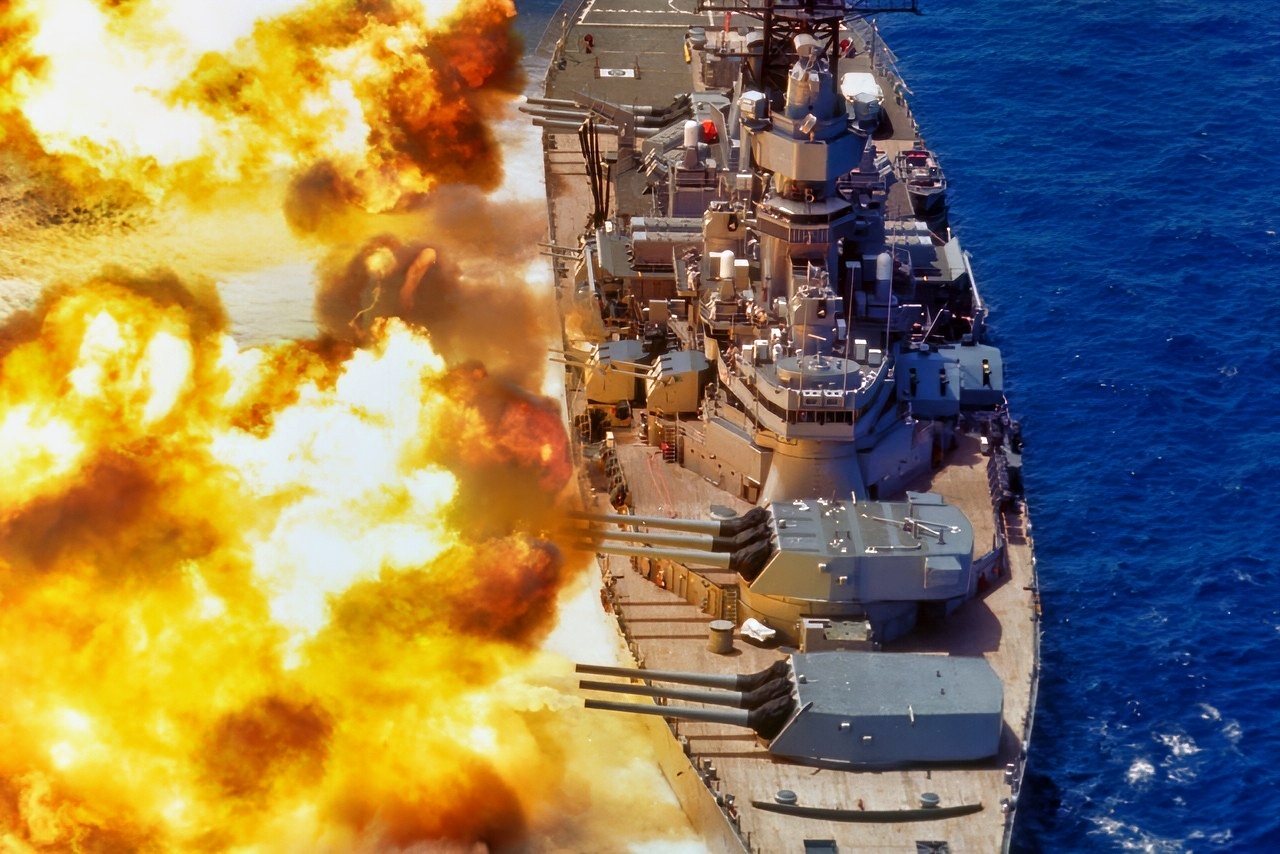Key points and Summary – The Montana-class represents the U.S. Navy battleships that never sailed. Authorized in 1940 as America’s answer to Japan’s Yamato-class superbattleships, the five planned ships were designed to be the largest, most heavily armed, and best-protected battleships ever built by the United States, featuring twelve 16-inch guns.
-However, the program was canceled in July 1943 before construction began.

16-Inch Iowa-Class Guns. Image Credit: National Security Journal.
-The decisive naval battles of World War II, particularly Coral Sea and Midway, proved that aircraft carriers, not battleships, were the new queens of the sea, shifting wartime priorities and resources irrevocably.
Why Didn’t The Montana-Class Battleships Ever Sail?
The United States had to face some realities in 1940. The US was woefully unprepared for what was to come by the end of the following year. World War II was in full swing. And as much as the US tried to remain neutral, that was not to be.
Former treaty ceilings that had constrained battleship size through the 1930s were no longer in effect. In the 1930s, the Japanese government began a shift towards ultranationalist militancy. This movement called for the expansion of the Empire of Japan to include much of the Pacific Ocean and Southeast Asia.
The Japanese adopted the Kantai Kessen, or Decisive Battle Doctrine, a naval strategy used by the Imperial Japanese Navy before the Second World War. This strategy aimed for victory through a single, decisive naval action.
Intelligence on Japan’s new super-battleships—what the world would later recognize as the Yamato-class—suggested the Pacific might see combat between behemoths unlike anything before.
The U.S. Navy wanted a battleship that could absorb punishment and hit back harder than the fast Iowa-class, while doubling as a floating anti-aircraft fortress for amphibious operations.
In 1940, the Navy still believed in the battleship as the power of the sea. Pearl Harbor, the Battle of the Coral Sea, and Midway were still in the distant future. But by 1943, the Montana class was canceled as the aircraft carrier, not the battleship, was the ruler of the world’s oceans.

USS Iowa 16-Inch Guns National Security Journal Photo. Taken August 15, 2025 By Harry J. Kazianis.
The Two Ocean Navy 1940 Building Program
In 1940, the Navy authorized five battleships of the Montana class, which were to be funded in the 1941 defense budget. They were to be the last battleships ever ordered by the Navy.
With an intended standard displacement of 60,500 tons, they were nearly a third larger than the preceding Iowa class, four of which were the final battleships actually completed by the United States.
The Montana-class was intended to carry twelve 16″/50 guns, three more than the earlier class. Protection against underwater weapons and shellfire was also greatly enhanced. They would have been the only new World War II era U.S. battleships to be adequately armored against guns of the same power as their own.
To achieve these advances, the Montana class was designed for a slower maximum speed (28 knots) than the speedy Iowas (35 knots) and had a beam too wide to pass through the existing Panama Canal locks.
What Would The Montana Class Have Looked Like?

Montana-Class Battleship. Image Credit: Creative Commons.
The Montana class battleships would have consisted of five ships, and not have been finished in construction on all until the late 1940s, to be constructed at three different Navy Yards:
USS Montana (BB-67), to be built at the Philadelphia Navy Yard, Pennsylvania, USS Ohio (BB-68), to be built at the Philadelphia Navy Yard
USS Maine (BB-69), to be built at the New York Navy Yard, Brooklyn, New York
USS New Hampshire (BB-70), to be built at the New York Navy Yard
USS Louisiana (BB-71) was to be built at the Norfolk Navy Yard, Portsmouth, VA.
Montana-Class Design Characteristics
Displacement: 60,500 tons (standard); 70,965 tons (full combat load)
Dimensions: 921′ 3″ (length overall); 121′ 2″ (maximum beam)

Long View of USS Iowa Guns. Image Credit: National Security Journal.
Powerplant: 172,000 horsepower steam turbines, producing a 28 knot maximum speed
Armament (Main Battery): Twelve 16″/50 Mark 7 guns in four triple turrets. Armament (Secondary Battery): Twenty 5″/54 guns in ten twin mountings (ten guns on each side of the ship)
The Navy believed that creating a 17-battleship navy would make the US the most powerful navy in the world by the late 1940s. But the Montana class was canceled in 1943, as the aircraft carrier became the new juggernaut of the sea.
Firepower Was The Purpose
The US Navy knew the value of the big 16-inch guns that the Iowa battlewagons carried in three turrets, each with three guns, nine guns in total. The Montana battleships would add a second aft turret of three guns, giving them a total of 12 of the massive 16-inch guns.
As our own Editor-in-Chief, Harry Kazianis, wrote just recently: “A twelve-gun broadside improves hit probability in ranging sequences and saturates a target’s armor scheme with multiple impact angles.
“With advanced armor-piercing shells and delayed-fuse design, U.S. naval gunnery excelled at deck penetration at long range, exactly where Pacific fights increasingly occurred.”
The Armor Was Immense
The Montana class was to have a 16.1-inch side belt, making it capable of withstanding its own heavy shells.
The turrets were protected by 20-inch armor. The Montanas would have been the largest, best-protected, and most heavily armed US battleships ever, and the only ones to rival the Empire of Japan’s Yamato-class battleships in terms of displacement.

Iowa-Class Firing 16-Inch Guns. Image Credit: Creative Commons.
Why Were the Montana-Class Battleships Canceled?
The Montana-class battleships never sailed because the U.S. Navy canceled their construction in July 1943.
The shift in naval warfare priorities from battleships to aircraft carriers, as demonstrated by the Battle of Midway, meant resources were needed for carriers, amphibious ships, and anti-submarine vessels instead. The Montana-class ships were never even laid down.
The battles of the Coral Sea and Midway showed that aircraft carriers, not battleships, were the dominant naval force. Resources were redirected to build more carriers and other urgent vessels. Those two battles were the first in history where the two navies never saw each other.
When the original plans were laid for the Montana-class battleships, the Navy envisioned a two-ocean force of battleships that would be second to none in the world.
Little did they know that by the end of World War II in August 1945, the U.S. Navy had 6,768 ships, a peak number that made it the largest naval fleet in the world.
This included 28 fleet carriers, 23 battleships, 71 escort carriers, 72 cruisers, 377 destroyers, and 232 submarines. The total also encompassed a massive number of smaller vessels like frigates, patrol boats, and amphibious craft.
About the Author: Steve Balestrieri
Steve Balestrieri is a National Security Columnist. He served as a US Army Special Forces NCO and Warrant Officer. In addition to writing on defense, he covers the NFL for PatsFans.com and is a member of the Pro Football Writers of America (PFWA). His work was regularly featured in many military publications.
More Military
Mach 6 SR-72 Darkstar Could Soon Be the ‘Fastest Plane on Earth’
America’s E-4B Doomsday Plane Has a Message for Russia and China
AIP: The Cheap Stealth Submarines the U.S. Navy Will Never Build
Russia’s Su-57 Felon Stealth Fighter Finally Opens Its ‘Secret’ Weapons Bay Doors
Canada’s Big F-35 Fighter Choice Is Stuck in ‘Stealth Limbo’










